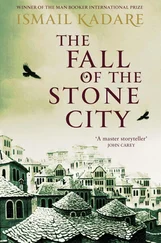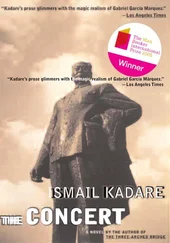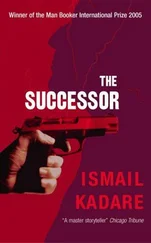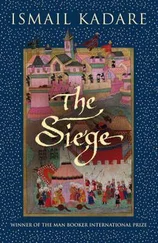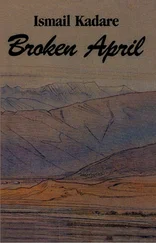Chronicle of Construction: penultimate step, from the ninth to the fifth stone. Extract from the records of the CBPP.
Ninth stone. Hewn at Abu Gurob, on the borders of Libya and Egypt. Seals in order but authority to lay held up by a denunciation. Suspicions that the stone had been switched during haulage. The stone was alleged to have been replaced by another taken not from the said quarry but from an old pyramid. Investigation demonstrated that the accusation was false. Eighth stone, from the same quarry. Of outstanding quality, like all stone cut at Abu Gurob. Which explains the jealousy that these stones arouse. First wind of denunciation at the quarry itself. Followed the stone to Medinet MahdL You might have thought that it would have faded away once the stone had been loaded onto the raft for the Nile crossing. But not a bit. It tracked it all along the river-bank and reattached itself to the stone when it was unloaded on shore. And it went on until investigation established that there was no foundation at all for the suspicion. Seventh stone. Also from Abu Gurob. Variously nicknamed Wild One, Blackstone, Bad’un. Also dozens of other nicknames after falling. Reasons for the slip not clarified. From the penultimate to the fifth step, it slid back down the ramp quite slowly, so it was first thought that it could be stopped. But once it reached the ninth step it began to accelerate. Crushed its first victims at the level of step eleven. Around step fourteen, it just went mad. Left the ramp, and, making an infernal racket, tumbled down along the pyramid face itself. The entire northern arris was badly shaken. At step nineteen panic broke out. At step one hundred and twenty-four, where the numbering reverses, it split in two. One half went off toward the right, the other carried on down. Ninety-two dead in all, not counting the injured. Other damage incalculable. Day of mourning for the pyramid. Sixth stone. From Saqqara quarry. Though it killed two men, it was an angel compared to its predecessor. Whence its nickname of Good Stone. Fifth stone. Also from Saqqara. Nothing in particular to report.
Appendix: re stone seven. From the Pharaoh’s Special Envoy marked “Top Secret” in red.
Discovering the true causes of the fall of the seventh stone is of the utmost importance for the State. In the account of the actual facts there are contradictions that arouse suspicion. The team undertaking the investigation is paying particular attention to the following points; causes of the slip (were real attempts made to stop it while it was still possible to do so, or did people turn a blind eye?); precise description of the trajectory; reactions of men on site; acts of heroism and/or cries of fear (“The pyramid is collapsing!”); other suspect reflections (“The higher you go, the harder you fall,” etc.).
Report of the Commission of Inquiry.
There is no lead on this seventh stone, neither from the quarry, nor through the usual channels of denunciation, including those used, mostly anonymously, by land-based and waterborne hauler. The start of the slip was almost imperceptible, to the extent that the builders leaning on it did not even feel it beginning to move. Head stonelayer Sham was the first to remark-. “But what’s going on, this stone feels as though it’s shifting!” The others thought he was joking, and teased him back: “Hey, you must have pushed it”—”No, it was you,” etc. A moment later when they realized that the stone was indeed on the move they tried to stop it with their bare hands, but to no avail. Then head stonelayer Sham, realizing that he had no grappling iron to hand, hurried to get one to slip it under the block. The others set to as well, but too late. The stone sent all the hooks flying and, as if increasingly angry, rushed headlong. It began to zigzag on the ramp at the level of step ten and began its massacre at step eleven. At step thirteen foreman Thut put himself in its path and yelled: “Long live the Pharaoh!” But he was crushed to pulp. One of his hands was torn off and went flying through the air, which only exacerbated the panic. When it reached step fourteen the stone left the ramp and went into free fall It was at that point that stonelayer Debehen began to howl: “The pyramid is collapsing!” For reasons unknown he then hurled himself at the foreman and bit his throat. Others began rushing about in all directions as during an earth-quake, but they were in such a state of terror that some of them, far from evading the stone, found themselves in its path and got crushed. By step twenty the bloodstains on the masonry block could be seen from far away; lumps of flesh and hair rained down with it as it fell. In fact it was not at step one hundred and twenty but slightly before that it split in two, and the witnesses who adamantly insist that it split at the precise point where what is called celestial numbering begins are either the victims of pure chance or the tools of some dark political design. The investigation continues.
AS THE hot season set in, the view of the pyramid rapidly altered. The ramps were taken down one by one, laying bare the dizzyingly steep sides of the monument itself. Only one hoisting track was left in place, the one that would be used for the last four stones and for the king-piece itself, the pyramidion.
In due course the area surrounding the base was cleared. The barracks that had served as the stonelayers’ sleeping quarters were dismantled, as were the redundant storerooms, messes, and stalls. Broken stones were gathered up and carted away every day together with reed-ropes, planks, broken winches, grappling tools, and all sorts of now useless rubbish.
The dust cloud over the building site began to lighten. But the sense of relief that resulted was not caused by the color of the sky alone. A new brightness spread in stages to the surrounding area, reached the capital, and even pushed on farther, to those remote provinces that good news, unlike bad, never reaches very fast.
Meanwhile the first taverns reopened, if rather hesitantly. Here and there, houses began to sport their numbers again. (It was rumored at the start that they had been removed to stop people finding their friends’ dwellings, and so to prevent the holding of dinner parties.) It became increasingly normal to see charcoal graffiti saying, ”We’ve built the pyramid! Now let’s have some fun! ”
Passersby nodded their heads. About time too, they said.
The flame of joy flickered but would not crackle, as if the logs in the hearth were still too green.
A single stone that had come adrift and tumbled down from the penultimate step had been enough to bring everything to a halt. Even without the investigation that the accident caused, those would have been very gloomy times. People felt that ancient, probably already dead afternoons had returned to cast their drab and guilt-laden light over them. Others imagined they were reliving a previous season. But even then they did not doubt that once the pyramid had been completed their field of vision would grow clearer and that things would find their right places again.
All the same the order to hoist up the last four pieces had still not come. Nor was there any mention of setting the pyramidion. It was allegedly being covered in gold leaf in some secret temple.
At dusk the ramp that would be used to push it up to the vertex looked like a fragile wire along which only spirits could travel.
Around the hut where the last four pieces had been stored and which was now guarded by sentries, god knows why, people could barely hide their amusement. To be sure, these stones were more important than the others, since the pyramidion itself would stand directly on them, but all the same, they were only bits of stone, not ministers, to be guarded like that! Others thought quite the opposite, that ministers were only transitory things, whereas those blocks of stone would live on until the end of time.
Читать дальше


